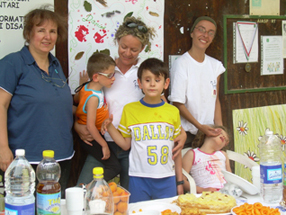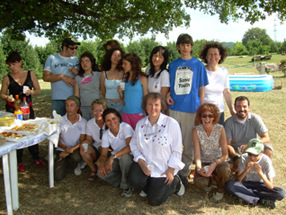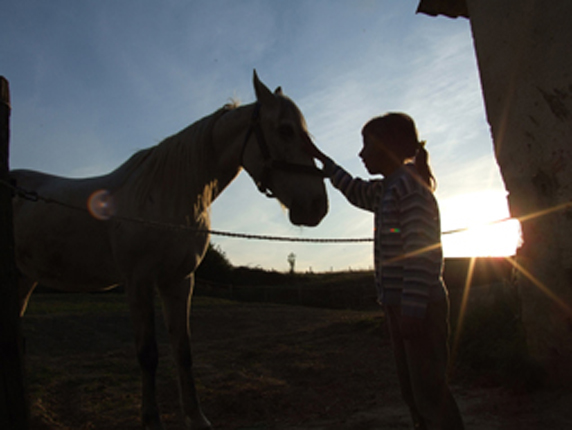|
Horseback
riding activities for children living with vision loss are still taking
place, requests for
participation are constantly increasing and there already are reservations
for 2008-09.
Aside from
the yearly activities carried out during school time, "green weeks" now have similar
success.
The activities lend
themselves well to the warm summer weather and the freedom it
provides.
Lessons take place predominantly outside in the beautiful GESE Horse
Park, in San Lazzaro di
Savena, and last all day. During
the summer of 2007, there were so many registration requests that it was
necessary to organize a
second week, one with five expert riders and the other with four new
cowboys (three boys and one girl to be exact).
A fifth cowboy was actually
supposed to participate in the second week, but a family situation kept
him from doing so. He will be expected with pleasure for the next "green
week". The
horseback riding activities, which began in 2004, were at first designed for children
living with vision loss, but after such successful results, the
Istituto Cavazza decided that it was appropriate to extend the program to children with other
physical and mental pathologies. The new families have had various
approaches to
the initiative; there was
curiosity, fervour but also doubts.

Visually
impaired kids with their mother

Kids, parents
and instructors at GESE |

Photo - Blind
girl with horse |
|
Throughout the
year, however, the children's enthusiasm and the psycho-physiological
improvements that parents personally noticed (improvements, not miracles)
dispelled any lingering doubt they had.
Why
are these activities such fun?
The "green weeks" are a complement to
the annual activities
where children acquire knowledge about the animal,
confidence and ways to interact with it, necessary techniques for
orientation, movement coordination and
how to ride the animal. During the summer, besides reinforcing
what has been learned, additional activities can be done in
psychomotricity, dance, ludic and educational
excursions and refreshing swimming in the pool. The protagonists are the
students and the horses, in a continuous interaction. These animals have
provided students the motivation to participate, to interact and to learn,
the necessary space to express emotions, to
project their internal world which in some cases is so difficult to
do. And this all came about
in a context of emotional exchange, games and sports. The horses were able
to recognize the riders' disability and adapted their behaviour
consequently; respecting the gestures and commands they received sometimes
very slowly and sometimes quite vivaciously.
|
Also,
unlike
human beings, animals don't
make value judgment about this behaviour. Since they do not have social
prejudice, and because body language is always used to communicate with
other animals, horses do not withdraw, show embarrassment, pity, or
arrogance in front of cavaliers who walk, speak or orient themselves
differently. Consequently, social distances that are often experienced by
persons with disabilities, even if at times unconsciously, do not exist
during "green
weeks" or during the yearly activities. The presence of Aiasport instructors and
the undersigned seemed almost marginal and did not transpire the lengthy
work of preparation for individual and group programs, necessary to best
develop the psychological dynamics within each group.
After horseback riding in the
morning, the riders spend the afternoon having fun (don't they ever get
tired?) with activities in psychomotricity, dance, goal ball games which
link pleasure with orientation and socialization purposes. And the horses?
As Carducci wrote in his poetry Davanti San Guido: and a lovely group of
horses neighing and trotting,
happy. |


